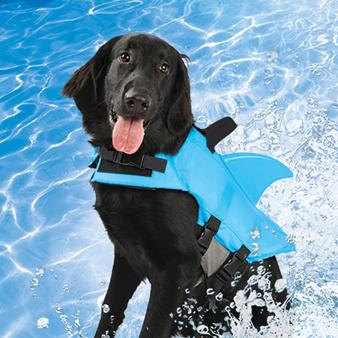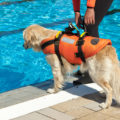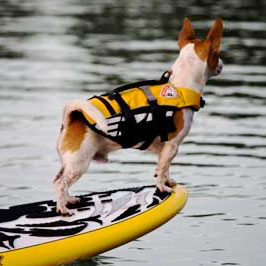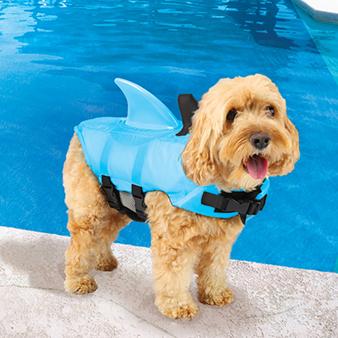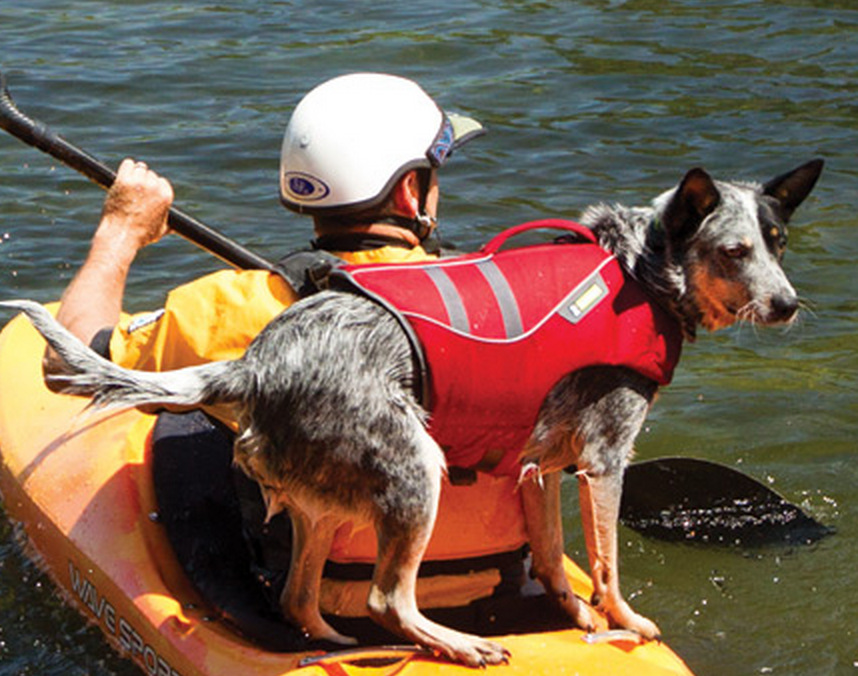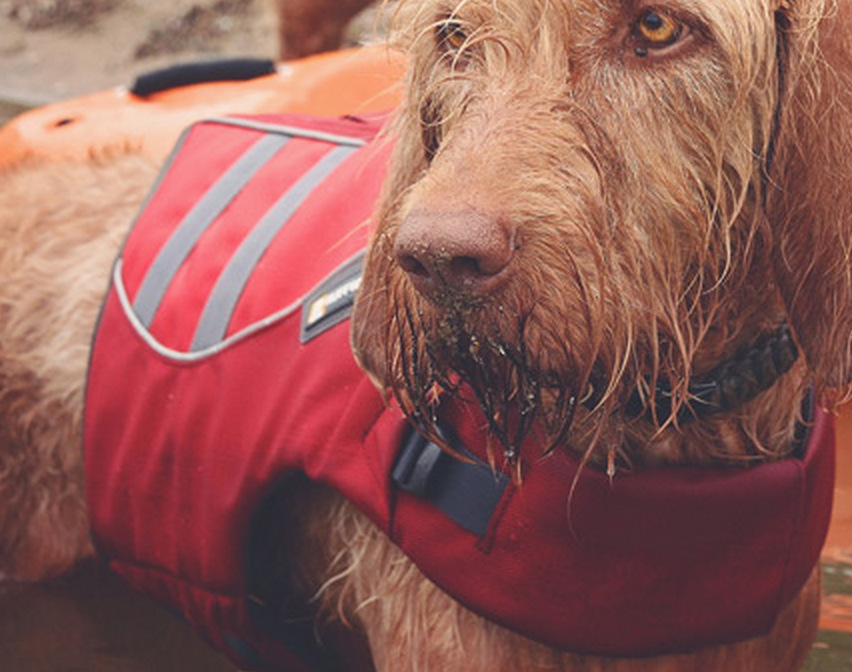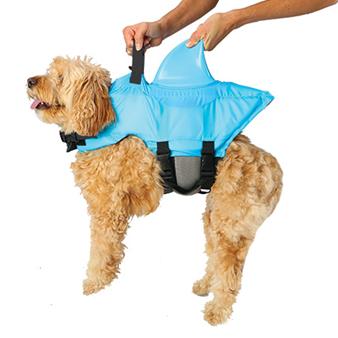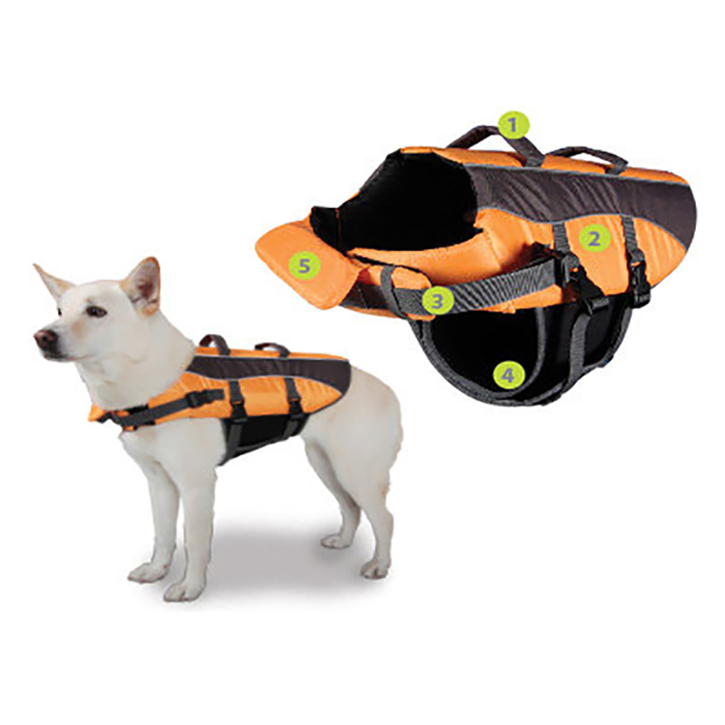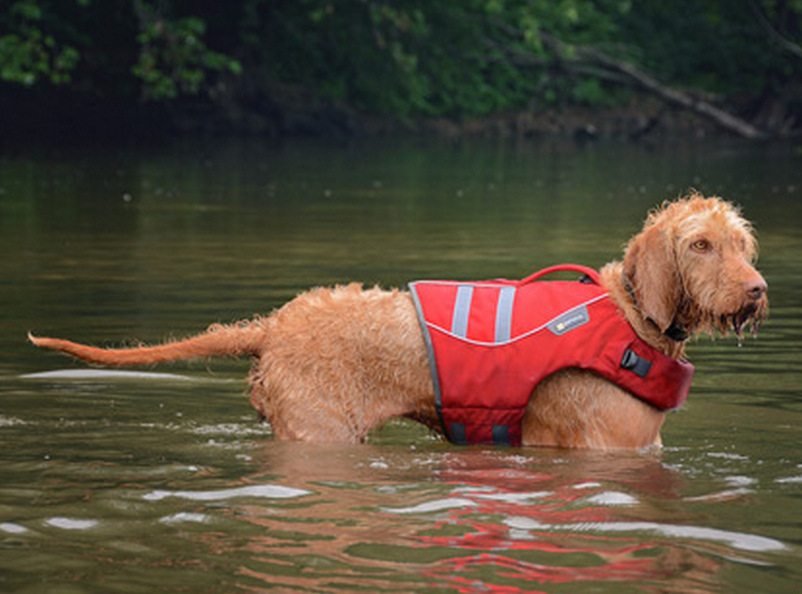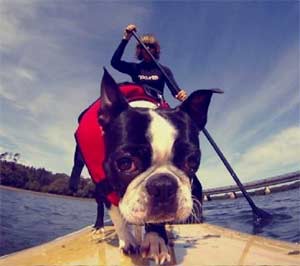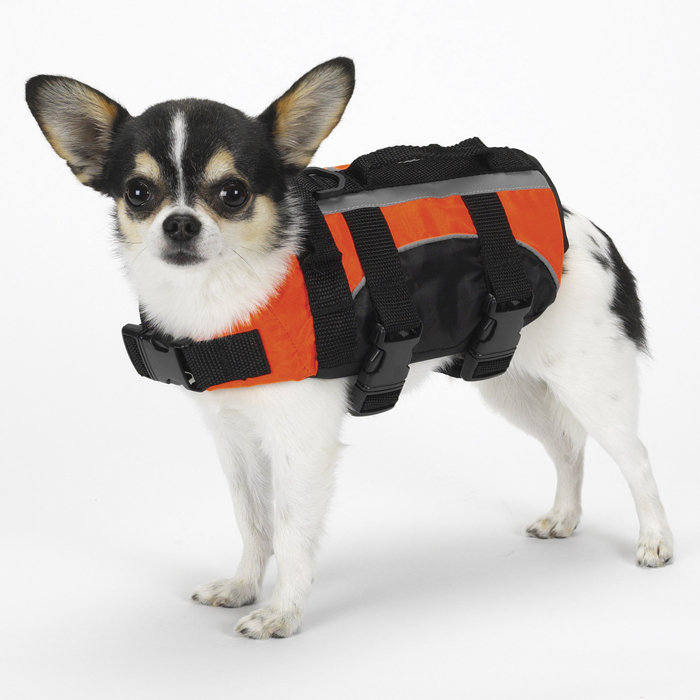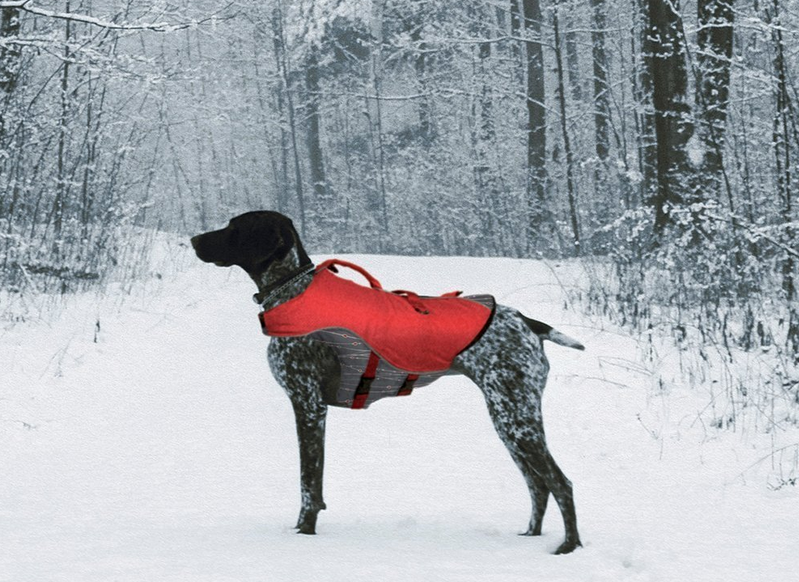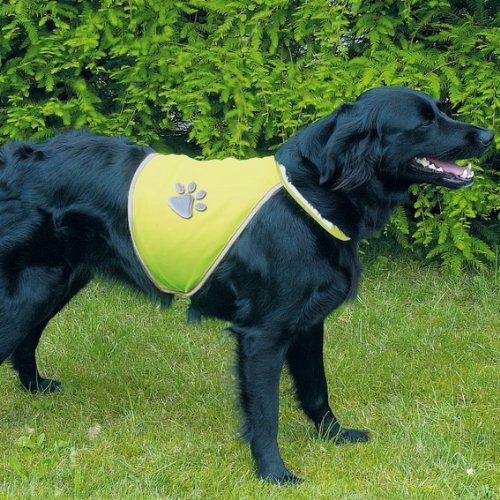Some dogs are naturally good swimmers, but not all of them are built that way. Dogs have different personalities and varying swimming abilities. Fortunately, most dogs can learn to swim.
Like with most other things, dogs can learn to swim quickly. But the training should be a slow, gradual process. You need to give them time to get comfortable being in the water and become good swimmers. It takes careful coaching and reassurance to make your dog a good swimmer.
Swimming can be a life-saving skill for your pet. It also allows the dog to have fun in the water. Most dogs will instinctively attempt to swim when they find themselves in a pool of water, but that doesn’t make them good swimmers. For dogs, swimming is mostly a taught behavior.
A pool is perhaps the best place to train your dog how to swim. In this post, we will describe a few steps on how to teach a dog to swim in a pool. Let’s get to it.
1. Carefully lead your dog into the pool
It is not uncommon for dogs to seem nervous about entering a pool of water. If you notice that your little buddy is nervous, be patient with them. Try to have them make a gradual entry into the pool, even if you have to make multiple attempts.
The aim here is to have your dog standing in the water comfortably. You will notice that they will be at ease when they finally get comfortable being in the water.
For this introduction, it is best that you begin on the entry steps of the shallow end of the pool. What you want is for your pooch to be able to stand in the water with his head not being submerged.
You may also find a better place in the pool to achieve this. Put a leash on the dog. Walk onto the top step of the pool as you encourage the dog to follow you.
Once the dog is at ease being on the step, exit the pool while encouraging them to do the same. Immediately return to the step so that the dog follows you back, then exit. Repeat this process multiple times.
This repetitive exercise aims to assure your pet that they can always get out of the water. This way, they become more accepting of getting into the water.
If you notice any hesitation or discomfort with your pup, slow down the lesson as much as possible. Go into the pool slowly as you encourage him to follow you.
When he makes subtle attempts to get into the water, encourage them with verbal cues and physical affection as you gently pet them. Let them know that they are not in danger.
You may also entice your pup with their favorite toy to distract them from the anxiety they may be experiencing.
2. Advance deeper
The trick to figuring out how to teach a dog to swim in a pool is to take it one step at a time. Once your dog gets comfortable moving in and out of the water, it is time to advance the swimming lesson.
You will do this by slowly and gradually moving deeper into the pool of water. Take one step at a time. Proceed to the next step only after your pet gets comfortable with the previous step.
If your dog is relatively small-sized, you may also use your body to perform the exercise. You can do this by holding your dog up against your shoulder (the same way you would cradle a baby) and then walking slowly into the water.
Ensure that you stop along the way after every couple of inches to give your good boy some time to seek comfort.Monitor how your dog is behaving as they gradually become submerged.
Once they are submerged up to the neck, walk them back and forth multiple times until they know that they can safely get in and out of the pool.
It is crucial that you be patient with your pet. You may have to repeat this process over a few days depending on the comfort level your dog exhibits.
Do not proceed to the next step until your pet is wagging their wet tail while submerged, which is a sign that they are fully at ease being in the water.
3. Teach your dog to paddle as you provide support
When your pup becomes comfortable with water being up to their neck, it’s time to go to the next step. Convince your dog to move into deeper water such that they must paddle to stay afloat. A dog life vest could be very helpful as it will help them stay afloat more easily.
If your pet begins to struggle, swiftly move in and help, regardless of whether they have a life vest on or not. You help them by placing your arm underneath them to provide extra support necessary for staying afloat.
With some additional support, your dog will paddle with their legs and in the process learn how to swim.
Your dog should appear as if they are running in the water as they paddle. If you notice that your pooch is not using his back legs to paddle, touch the back legs as a cue so that he can also paddle with them too.
Your dog should paddle while keeping their head up and their neck extended forward – this posture allows them to maintain better vision and to breathe more easily.
Once you notice that your dog is paddling effectively, slowly and gradually reduce your support. Do it incrementally until your dog can paddle on their own. Make sure that you are right next to your dog always in case you need to reestablish support.
Manage your expectations. Don’t expect your pup to pull a Michael Phelps after a few days of training. Let them swim for a short period in their first few sessions – they will get tired pretty fast anyway. Remain in the shallow end of the pool.
4. Train your dog on how to exit the pool
Well, typically, pool steps are designed for humans, and dogs may not know how to use them unless they are shown how. It is crucial that you teach your dog how to use the steps to exit the pool on their own.
you will start this exercise by leading your good boy out of the pool via the steps using a leash. Repeat this process multiple times. Once your dog can swim and exit the pool, it’s time to observe whether they can do it on their own.
Get another family member to stand at the top of the pool steps. Get into the pool with your dog, and move a few feet away from the steps. Instruct the family member to call the dog to exit the pool. Let your pup go.
Once your pet makes it out of the pool, repeat this process multiple times within that session.
Being able to exit the pool is crucial for your dog’s safety. Repeat this lesson in multiple ways to ensure that your dog knows their way out of the pool.
Have the dog start from different locations within the pool so that they can learn to locate the steps from any location inside the pool.Test for reinforcement about four weeks later.
5. Enhance and reinforce the training
Ensure that you let your dog know that swimming is a fun experience. This is the trick to the process of how to teach a dog to swim in a pool. Encourage them to have fun with it by giving your pet verbal and physical praise.
Pet them. Give your good girl a treat afterward. Make them associate swimming with a good time.
Take your dog to the very edge of the pool and have them swim across the entire pool. Let them swim in various parts of the pool.
You can make the swimming experience more fun for your dog by throwing in balls and other toys into the water and having your dog retrieve them. Throw the toys into all parts of the pool and see how well they are able to retrieve them and swim back.
Your dog may surprise you and end up learning how to swim in one lesson. Good for you. Other dogs may need several lessons before they can swim. Be patient with your pet. Work with the dog’s capabilities.
Four to five lessons every day would be ideal. Each lesson should take about five minutes. Don’t exhaust the dog. Let the training process be fun as well. Let them rest in between lessons. Stay aware of their stamina as dogs can keep trying even when they are exhausted.
Dogs that are quick learners should also be trained further to enhance their swimming skills. Training fortifies talent.
Even after your dog becomes proficient at swimming, never let them swim unattended as this is a risk to their safety.
Teaching a dog to swim is not a complicated process. It, however, requires care and patience. The training should be made as fun as possible for the dog. Swimming is a safety skill for your pet. Swimming also allows your pooch to have fun in ways he couldn’t before learning this awesome skill.
